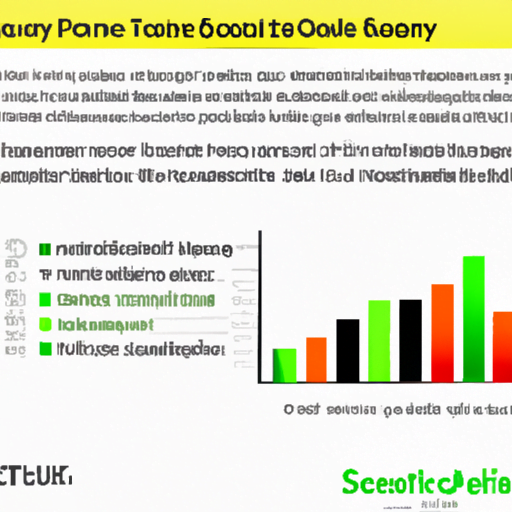So, you’re interested in off-grid living and thinking about installing solar panels to power your home. That’s awesome! It’s a great way to reduce your carbon footprint and gain energy independence. But here’s the thing – solar panels won’t be able to power your home at all times, especially when the sun isn’t shining. That’s where solar batteries come in. They store the excess energy produced by your solar panels during the day so you can use it when the sun goes down. But, how long do solar batteries actually last? Well, let’s dive into the topic and find out!
When it comes to the lifespan of solar batteries, there are a few factors to consider. The first is the type of battery you choose. There are different technologies available, such as lead-acid, lithium-ion, and flow batteries. Each has its own advantages and disadvantages, including varying lifespans. Generally, lead-acid batteries have a shorter lifespan of around 3 to 5 years, while lithium-ion batteries can last anywhere from 10 to 15 years.
Other factors that influence a solar battery’s lifespan include how often it’s used and how it’s maintained. If you regularly cycle your batteries (use them and recharge them), they may degrade faster. Similarly, if you don’t properly maintain your batteries by keeping them at the right temperature and charging them correctly, their lifespan may also be shortened. In our upcoming article, we’ll go into more detail about each type of battery and provide tips on how to maximize their lifespan. Stay tuned!
Overview of Solar Batteries
Solar batteries play a crucial role in off-grid living, allowing you to store and utilize solar energy even when the sun is not shining. They provide backup power during the night or in case of power outages, ensuring a continuous energy supply for your appliances and other electrical needs. In this article, we will explore the importance of solar batteries, the different types available, factors affecting battery lifespan, how to extend the lifespan of batteries, when to replace them, and the cost considerations associated with solar batteries.
Importance of Solar Batteries
Storing Solar Energy
One of the primary reasons for investing in solar batteries is to store the excess solar energy generated during the day. Without batteries, the surplus energy is typically sent back to the grid or wasted. By storing this energy in batteries, you can power your home or facility during periods of low or no sunlight, reducing your reliance on the grid and saving money in the long run.
Powering Appliances during the Night
Solar batteries allow you to power your appliances and other electrical devices even when the sun is not shining. This is particularly beneficial for off-grid living, where access to a stable grid connection may not be available. With a fully charged solar battery system, you can enjoy the same level of convenience and comfort as those connected to the grid, without relying on traditional fossil fuel-powered generators.
Providing Backup Power
Solar batteries act as a reliable backup power source during grid outages or emergencies. When the grid goes down, homes with solar panels but no batteries are still left without power. However, if you have solar batteries in your system, you can continue to enjoy electricity until the grid is restored. This can significantly improve the resilience and reliability of your energy supply, especially in areas prone to frequent power outages.

Types of Solar Batteries
There are several types of solar batteries available in the market, each with its own advantages and disadvantages. Understanding the different types can help you make an informed decision when choosing a battery system for your off-grid living needs.
Lead-Acid Batteries
Lead-acid batteries are one of the oldest and most commonly used types of solar batteries. They are relatively affordable and have a good power capacity. However, their lifespan is shorter compared to other battery types, typically lasting around 3 to 5 years. Lead-acid batteries also require regular maintenance, including checking the water levels and ensuring proper ventilation.
Lithium-Ion Batteries
Lithium-ion batteries have gained popularity in recent years due to their longer lifespan, high energy density, and lightweight design. They can last up to 10 years or more, depending on usage and maintenance. Lithium-ion batteries are also known for their efficiency and ability to withstand high discharge rates. Although they tend to be more expensive upfront, their longer lifespan and higher performance make them a cost-effective choice in the long term.
Flow Batteries
Flow batteries are a relatively newer technology in the solar battery market. They use liquid electrolytes stored in tanks, which can be easily replaced when needed. Flow batteries have a long lifespan, typically lasting 15 to 20 years or more. They also have high energy capacity and can handle deep discharge cycles without significantly affecting their performance. However, flow batteries are still evolving, and their upfront cost remains relatively high.
Saltwater Batteries
Saltwater batteries are an environmentally friendly option for off-grid energy storage. They use a saltwater electrolyte solution, which is non-toxic and harmless. Saltwater batteries have a long lifespan, similar to flow batteries, and can provide reliable performance over many years. However, they have a lower energy density compared to lithium-ion batteries, which means you may require a larger battery bank to meet your energy needs.
Comparing Different Battery Types
When choosing a solar battery, it is essential to consider factors such as lifespan, cost, maintenance requirements, energy density, and overall performance. Each battery type offers its own set of benefits and considerations, so it is crucial to assess your specific needs and priorities before making a decision.
Battery Lifespan
The lifespan of a solar battery is a crucial factor to consider when evaluating the overall cost-effectiveness of the system. Here, we will explore the expected lifespan of different types of solar batteries and the factors that can affect their longevity.
Factors Affecting Battery Lifespan
Several factors can influence the lifespan of solar batteries:
Depth of Discharge
The depth to which a battery is discharged and then recharged, known as depth of discharge (DoD), can affect its lifespan. Generally, shallower discharge levels result in a longer battery life. It is recommended to keep the DoD of lead-acid batteries below 50% and lithium-ion batteries below 80% to maximize their life expectancy.
Charge Cycles
The number of charge and discharge cycles a battery undergoes throughout its lifetime can impact its lifespan. Each battery chemistry has a specific number of cycles it can withstand before its performance deteriorates. It is important to choose a battery type with a sufficient number of cycles to meet your energy demands without compromising its longevity.
Temperature
Extreme temperatures, both high and low, can affect the performance and lifespan of solar batteries. Heat can accelerate battery degradation, while cold temperatures can reduce their energy output. It is important to install and operate batteries in an environment that maintains optimal temperature conditions.
Maintenance and Care
Proper maintenance and care can significantly extend the lifespan of solar batteries. Regularly checking the water levels in lead-acid batteries, ensuring proper ventilation, and following manufacturers’ guidelines for maintenance and care play a vital role in preserving their performance and longevity.
Expected Lifespan of Lead-Acid Batteries
Lead-acid batteries typically have a lifespan of around 3 to 5 years, depending on usage and maintenance. Proper care and maintenance can help maximize their lifespan. However, it is important to budget for battery replacement every few years when opting for lead-acid battery systems.
Expected Lifespan of Lithium-Ion Batteries
Lithium-ion batteries have a longer lifespan compared to lead-acid batteries, typically lasting around 10 years or more. With proper maintenance and care, lithium-ion batteries can last even longer. Their longer lifespans make them a more cost-effective option over time, despite their higher upfront costs.
Expected Lifespan of Flow Batteries
Flow batteries have an impressive lifespan, lasting around 15 to 20 years or more. Their ability to handle multiple discharge cycles without significant degradation makes them a durable and reliable option for off-grid living. However, due to their relative newness in the market, their long-term performance and reliability are still being evaluated.
Expected Lifespan of Saltwater Batteries
Saltwater batteries have a lifespan similar to flow batteries, typically lasting around 15 to 20 years or more. They are known for their robust performance and longevity, making them a popular choice for those seeking environmentally friendly energy storage solutions.
Extending Battery Lifespan
While the lifespan of solar batteries is influenced by various factors, there are steps you can take to extend the longevity of your battery system:
Proper Storage and Maintenance
It is important to store and maintain your batteries according to the manufacturer’s guidelines. This may include regular checks of electrolyte levels, ensuring proper ventilation, and protecting them from extreme temperatures or harsh weather conditions.
Battery Management Systems
Investing in a battery management system (BMS) can help prolong the lifespan of your solar battery. A BMS monitors and regulates the charging and discharging process, preventing overcharging and over-discharging, which can significantly impact battery performance and lifespan.
Avoiding Overcharging and Over-Discharging
Overcharging and over-discharging are detrimental to the lifespan of solar batteries. It is essential to ensure that your battery system is properly sized and configured to avoid excessive charge or discharge rates. This can be achieved by consulting with a professional installer or using advanced battery management systems.

Replacing Solar Batteries
Eventually, all solar batteries will degrade and reach the end of their lifespan. Here, we will discuss the signs of battery degradation, when is the right time to replace your solar batteries, and the proper disposal methods for old batteries.
Signs of Battery Degradation
As solar batteries age, their performance gradually declines. Look out for the following signs that your batteries may need replacement:
- Reduced energy storage capacity
- Longer charging times
- Increased frequency of deep discharge or low charge levels
- Decreased efficiency and output
- Inability to hold a charge for an extended period
If you notice any of these signs, it may be time to consider replacing your solar batteries.




